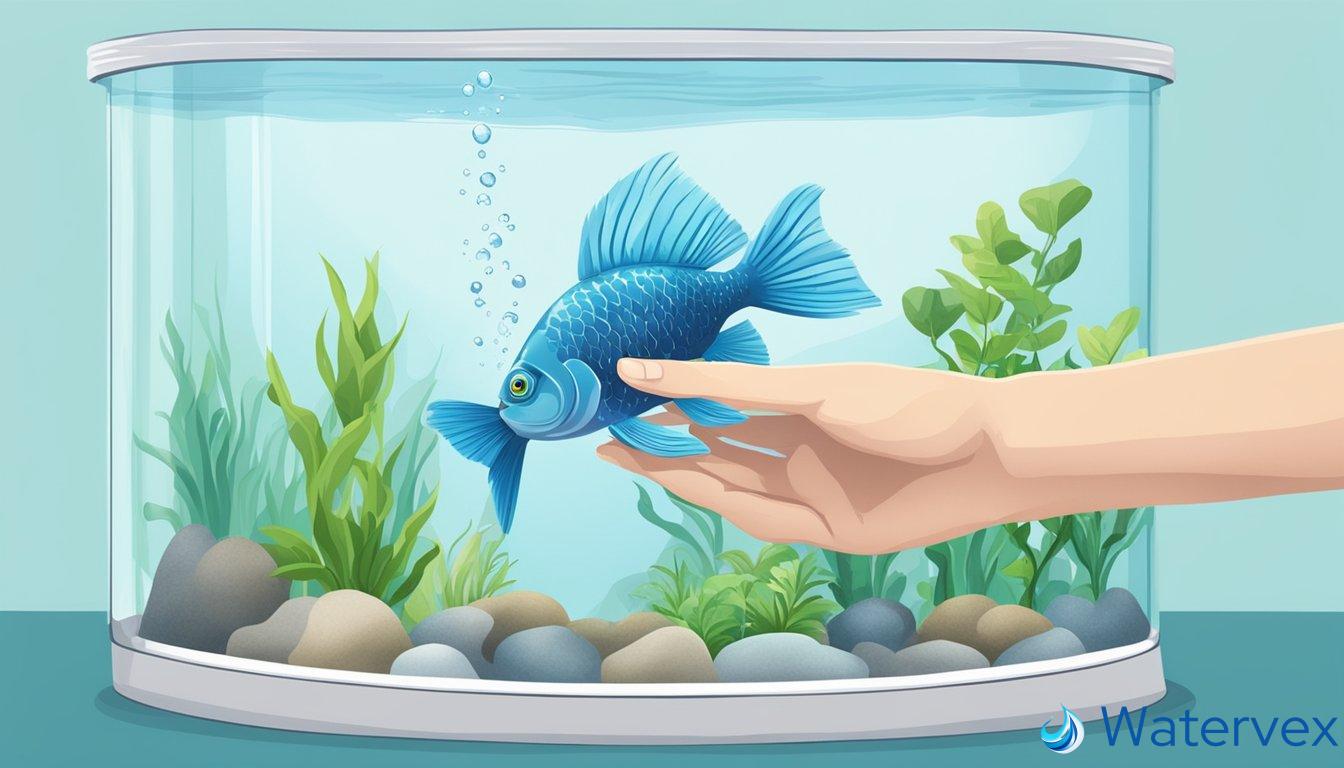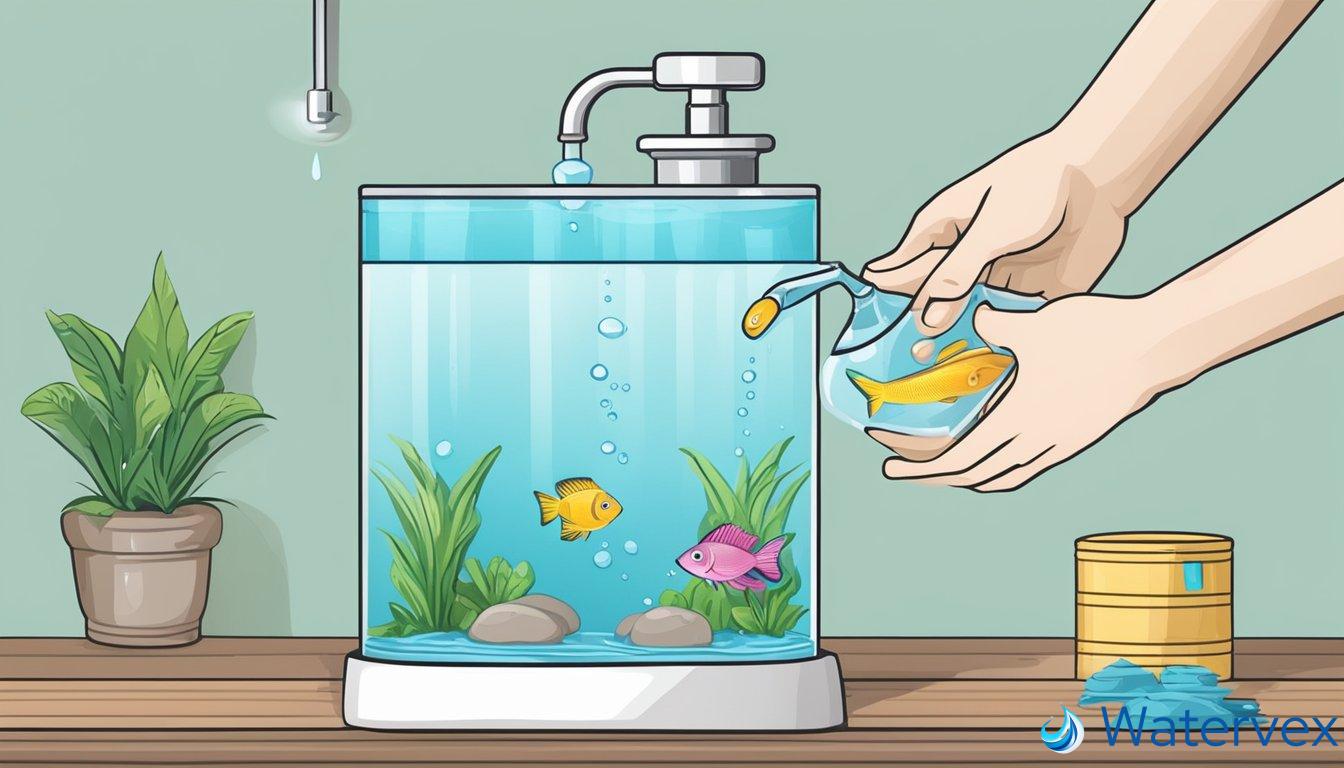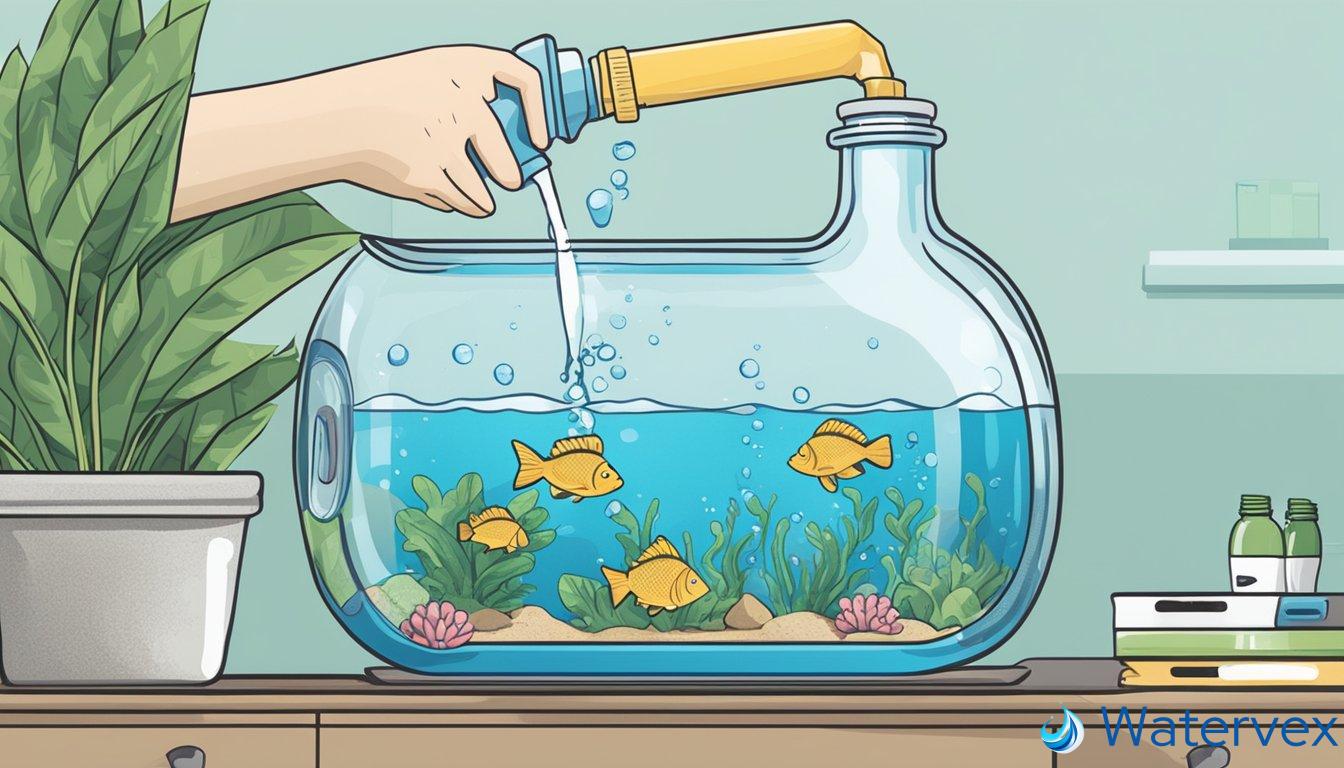When maintaining an aquarium, controlling water chemistry, particularly ammonia levels, is crucial for the health of your fish. Many aquarists turn to water conditioners as a solution, but there’s confusion about whether these products actually remove ammonia from the water. Ammonia, a waste product from fish, is highly toxic and can lead to serious health issues if not managed correctly. Water conditioners play a role by altering the state of ammonia, but it’s critical to understand their mechanism to use them effectively.

The interaction of water conditioner with ammonia is a binding process; it doesn’t remove ammonia but rather converts it to a non-toxic form. When you add conditioner to your tap water, it targets chlorine and heavy metals, making the water safe for your aquarium creatures. However, its interaction with ammonia differs, as it detoxifies rather than eliminates ammonia. Regular tank maintenance, including water changes and filtration, remain essential alongside the use of conditioners.It’s important to consider not just the immediate effects of water conditioners, but also the long-term health of your aquatic environment.
Key Takeaways
- Water conditioners convert ammonia to a less harmful state but do not remove it.
- Proper aquarium maintenance is vital for controlling ammonia levels.
- Using water conditioners is part of a broader approach to ensuring safe water chemistry.
Understanding Ammonia in Aquariums
Ammonia is a silent adversary in your aquarium, posing a threat to your aquatic friends. Let’s explore how this chemical affects tank inhabitants, where it comes from, and how you can keep track of its levels.
The Impact of Ammonia on Aquatic Life
Ammonia (NH3) is extremely toxic to fish, even in trace amounts. Fish exposed to elevated ammonia levels exhibit signs of distress, impaired gill function, and can be at increased risk of disease. In an aquarium, the right balance of NH3 and NH4 (ammonium), which is less toxic, is vital. The pH of the water determines the form ammonia takes; higher pH means more harmful NH3.
Sources of Ammonia in Fish Tanks
In your aquarium, ammonia originates from several sources such as decomposing fish waste, uneaten food, and the excretion of NH3 directly by fish. Overfeeding and lack of regular maintenance exacerbate the problem, increasing ammonia levels. Ensuring a well-functioning biological filtration system is essential, as it converts NH3 to nitrite, and subsequently to less harmful nitrate.
Ammonia Test Kits and Monitoring
An ammonia test kit is a crucial tool for maintaining a healthy aquarium. Regular monitoring helps you detect NH3 and ammonium (NH4+) before they adversely affect your fish. These kits often measure total ammonia (the sum of NH3 and NH4+) giving you a comprehensive view of the health of your tank water. If tests indicate high ammonia, immediate action is necessary to protect your aquatic life.
Water Conditioners and Ammonia Neutralization

Ammonia in aquariums poses a significant risk to fish, and neutralizing this compound is essential for a healthy aquatic environment. Water conditioners are the frontline defense against this invisible threat, offering a chemical means to transform harmful ammonia into a non-toxic form.
How Water Conditioners Work
Water conditioners perform a crucial role in detoxifying harmful substances in aquarium water. When added to a tank, these solutions bind to ammonia molecules, converting them to a less harmful substance, like ammonium. This process, known as chemical neutralization, doesn’t remove ammonia but rather renders it harmless to fish. A well-known water conditioner, Seachem Prime, is a go-to product for many aquarists because it effectively detoxifies not only ammonia but also chlorine and chloramine, both common in tap water.
- Detoxify Ammonia: Transforms harmful ammonia into safer compounds.
- Neutralize Chlorine/Chloramine: Renders tap water safe for aquatic life.
Selecting the Right Water Conditioner
While shopping for water conditioners, you must choose a product that aligns with your specific needs. Dechlorinators, for example, are necessary if your water source contains chlorine or chloramine. You might opt for a multi-purpose product like Seachem Prime, which both detoxifies ammonia and neutralizes these chemicals. When using a dechlorinator, check if the active ingredient is sodium thiosulfate, an effective agent for removing chlorine.
- Choose Based on Needs: Match the conditioner to contaminants in your water.
- Check Active Ingredients: Look for conditioners with sodium thiosulfate for chlorine.
Natural Ingredients in Water Conditioners
In addition to chemical agents, some water conditioners incorporate natural ingredients like aloe vera and extracts that promote the slime coat of fish – a kind of stress coat. These ingredients can help the fish recover from the stress of ammonia exposure. Furthermore, the right conditioner might contain beneficial bacteria to kick-start the nitrogen cycle, aiding in the long-term management of ammonia through nitrifying bacteria.
- Aloe Vera: Enhances fish’s protective slime coat.
- Beneficial Bacteria: Initiates the aquarium’s nitrogen cycle for natural ammonia control.
Alternatives to Chemical Water Conditioners

When managing ammonia in your aquarium, you have options beyond traditional water conditioners. Discover the benefits of biological solutions, regular maintenance, and the natural assistance of plants in the following approaches.
Biological Filtration Methods
Biological filters are a cornerstone of the aquarium nitrogen cycle, responsible for converting toxic ammonia into less harmful nitrates. Your aquarium filter should include filter media rich in surface area to house beneficial bacteria. These microbes latch onto filter media and substrate, breaking down ammonia naturally. Options like bio-balls, ceramic rings, and sponges provide an ideal environment for these bacteria to thrive. By maintaining a healthy bacterial colony, you ensure continuous ammonia control without reliance on chemicals.
Benefits of Regular Water Changes
The practice of regular water changes is critical in keeping ammonia at bay. Replacing 10-20% of your tank’s water each week dilutes accumulated contaminants, including ammonia. This not only refreshes the water but also stabilizes water parameters, creating a healthier environment for your aquatic friends. Additionally, it’s an opportunity to vacuum the substrate, removing waste before it breaks down into ammonia.
The Role of Aquatic Plants in Ammonia Control
Aquatic plants absorb ammonia from the water, using it as a nutrient to foster growth—a process beneficial for you and your tank dwellers. Fast-growing species, like hornwort and duckweed, are particularly adept at this. As they take up ammonia, they also contribute to the overall balance of the tank’s ecosystem and provide shelter for fish and other inhabitants. Including a robust plant life in your aquarium is a natural method to manage ammonia levels effectively.

